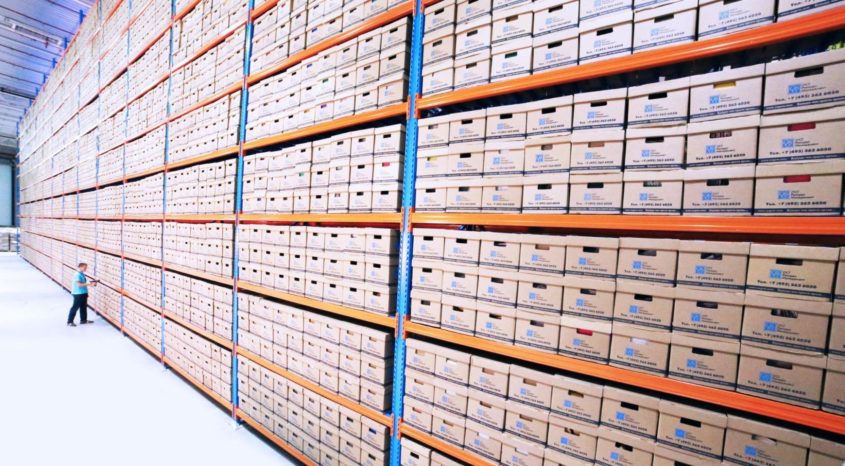We know that warehouse processes differ across industry and business type, and retail and wholesale in particular, are very complex business types.
This is why you need a warehouse management system that has been designed and built specifically with retail and wholesale in mind. During your vendor discussions and research phase, these are the eight WMS features you must look out for.
#1. Multi-Location Fulfillment
When operating across multiple channels, or as a hybrid retail and wholesale business, you’ve likely got inventory stored in a variety of places. To achieve optimum efficiency within your business, each location should integrate seamlessly with your sales channels.
Your WMS should allow you to not only fulfill orders from these different locations in a way that makes sense to your business, but the best-of-breed solutions will also enable your orders to be routed to the appropriate warehouse automatically as well.
#2. Business Management System Integration
For a truly coordinated approach across your business, it’s recommended to consider fully integrated solutions where the WMS shares the same database and workflows as your inventory management, order management and accounting.
As you explore your warehouse management options, find out what data is exchanged, or can be between your back office software and the WMS. In particular, think about how your accounting will be affected each time inventory is added or removed. Will your WMS integrate with your accounting systems to trigger automatic journal creation and inventory valuation updates, for instance?
#3. Real-Time Synced Inventory Updates
Real-time inventory management and automatic updates ensure all your sales channels are up-to-date, reducing the risk of overselling and disappointing customers and prevents your staff from having to spend time on needless data entry.
Therefore, during your discussions, check which channels can be integrated with your inventory and how and when inventory updates occur.
#4. Advanced Inventory Counts Module
To achieve efficient inventory counts, your chosen WMS should enable you to not only count all of your inventory quickly and efficiently, but it should also allow for more advanced functions, such as cycle counts.
Cycle counts are more focused lists of products that need to be counted, with some of the best options being high risk and high value counts, as well as using the ABC method. Check that your chosen warehousing solution has this option included, or whether you can easily build your own inventory lists.
#5. Shipping & Carrier Management
By finding a warehouse management system that easily integrates with leading shipping providers and carrier management systems, you won’t need to compromise on your technology stack or waste time manually creating shipping labels and manifests.
This type of integration will save you significant time and money by automatically selecting the most cost-effective shipping provider for the desired time frame. Furthermore, you’ll be able to setup carrier automation rules, embed shipping labels onto packing notes, print on demand, and free up time-intensive resources that can be better spent on growth activities like sales and marketing.
#6. Cloud-Based Access
With technology continually improving, there’s no denying that the future of modern warehouses is cloud-based. No more clipboards and notepads, the future is very much in instant updates.
Therefore, you need to determine the right hardware for your business and ensure that your WMS can support it. Barcode scanners, label printers, even wearable technology are all good options for improving the efficiency of your warehouse.
Additionally, there are a whole host of benefits that cloud-based systems can bring to your business such as a lower total cost of ownership, and regular updates without the pain, hassle and cost of time-consuming upgrades and maintenance.
#7. Ease of Use
Within the warehouse, there are two very important factors that require a system to be easy to use and intuitive.
Firstly, you have the need to get seasonal and temporary staff up-to-speed quickly, therefore, any system they use must be able to be learned in minutes.
And secondly, you need to have software that works effectively in a warehouse environment – large buttons, clear UI, no clutter, and the ability to hide information that isn’t needed – are all things you’ll need to consider when selecting a new WMS.
#8. Experienced Retail- & Wholesale-Focused Vendor Team
Okay, this isn’t a feature per se, but it’s a very important part of your WMS buying decision.
Not only will your WMS implementation be faster and smoother if the team helping you is proficient in retail and wholesale, but you’ll also get help much faster after you’re live with the system if the support team behind the software is also highly experienced.
Do keep this in mind when evaluating your options – it will pay dividends in the long-run to work with a vendor that isn’t just a technology provider, but a long-term partner as well.
The advice found in this blog has been adapted from our recent guide ‘How to choose the right warehouse management system’.
The guide provides you with a detailed overview of everything you’ll need to consider when choosing, purchasing and implementing a warehouse management system within your business, including:
- When you should consider purchasing a warehouse management system
- The benefits you’ll see from implementing one
- The warehouse management features you should look out for
- The questions you should ask prospective WMS vendors
- What you need to know before implementing a WMS
- What kind of costs are associated with a new system
- Additional fulfillment and warehousing apps you’ll find useful
Download the guide today and find out more about how to choose the right warehouse management system for your retail or wholesale business.




